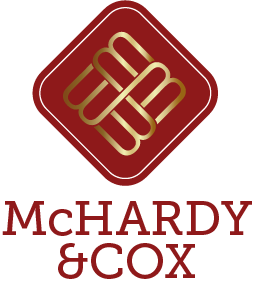Budget Spring 2022 statement from Brewin Dolphin
March 2022
Spring statement 2022
23 March 2022
Chancellor Rishi Sunak has delivered his spring statement, in which he introduced some short-term support for those struggling with rising costs, but left many investors facing higher taxes as a result of frozen thresholds and allowances in the coming years.
Whereas the chancellor’s previous two spring statements were dominated by helping workers and businesses withstand the economic shock of the pandemic, this year’s came against a backdrop of soaring inflation and energy bills. Inflation is forecast to average 7.4% this year1, with steep price rises exacerbated by Russia’s invasion of Ukraine.
To help families with the rising cost of living, Sunak announced an increase in the National Insurance (NI) threshold and a fuel duty cut. However, as the Office
for Budget Responsibility (OBR) warned in its economic and fiscal outlook, households are still on course for “the biggest fall in living standards in any single financial year since ONS records began in 1956/57.”
“A few pence off fuel and lifting the National Insurance threshold will soften the pain at the margins, but it won’t come close to offsetting the damage to real incomes and wealth that inflation inflicts.” Comments Guy Foster, Chief Strategist at Brewin Dolphin
Here, we look at the main announcements and what they might mean for investors and the economy.
The economy
Whereas the autumn budget painted a somewhat rosier picture of the UK economy than had been seen previously, the OBR’s latest figures proved rather bleak. Warning of “significant uncertainty” around the global gross domestic product (GDP) outlook due to the Russia-Ukraine war, the OBR said higher global energy prices will weigh heavily on the UK economy.
If wholesale energy prices remain as high as markets expect, energy bills are set to rise by another 40% in October, pushing inflation to a 40-year high of 8.7% in the fourth quarter of 20221. As a result, GDP is expected to grow by just 3.8% this year, down from the OBR’s October forecast of 6.0%.
With inflation outpacing growth in nominal earnings and net taxes due to rise in April, real living standards are set to fall by 2.2% in 2022/23 and not recover their pre-pandemic level until 2024/25.
Fuel duty cut
In an effort to soften the blow of spiralling prices, the chancellor announced that fuel duty would be reduced by 5p a litre. This measure comes into effect from 6pm today and will last for 12 months. In addition, VAT on the installation of energy saving materials will fall from 5% to 0% for five years from April in England, Scotland and Wales.
Increased NI threshold
Sunak did not cave into pressure to delay the upcoming increase in NI – a measure that aims to help fund health and social care costs. The rate will therefore rise, as planned, by 1.25 percentage points from 6 April 2022.
Sunak did, however, announce that the threshold at which earners start paying NI would increase by £3,000 to £12,570 from July, thereby bringing it in line with the personal income tax allowance. However, as the OBR noted, the increase in the rate of NI and the freezing of income tax thresholds mean that aggregate post-tax incomes will fall by more than the NI threshold increase raises them.
Promise of lower income tax
In a surprise move, Sunak announced that the basic rate of income tax would reduce from 20% to 19% from April 2024. He claimed this would benefit more than 30 million people and represent a tax cut of over £5bn a year.
Other measures included doubling the Household Support Fund to £1bn, and increasing the employment allowance for small businesses from £4,000 to £5,000.
Prepare for the new tax year
While the spring statement brought a small measure of relief for some households, it remains the case that many people could pay more tax this year than they did previously. Several tax allowances and thresholds were frozen last year until 2026, and a previously announced dividend tax hike is just around the corner. It is therefore essential to ensure you are making the most of all the tax allowances and reliefs available to you, and that you seek expert advice on your financial and tax affairs.
Here, we summarise how the chancellor’s ‘stealth’ taxes could affect you, and some potential ways of mitigating their impact.
Income tax thresholds
The chancellor announced last year that the personal allowance and higher-rate tax threshold would be frozen for five years from April 2021. The personal allowance, which is the amount you can earn each year before you start paying income tax, therefore remains at £12,570 in the 2022/23 tax year, while the higher-rate tax threshold remains at £50,270.
By freezing these thresholds, rather than increasing them in line with inflation, more people could drift into higher andadditional-rate income tax bands and potentially see their personal allowance tapered once ‘adjusted net income’ exceeds £100,000.
“Last year’s decision to freeze a host of allowances is going to make the burden of higher inflation that much harder to bear, even acknowledging the promise of a one percentage point fall in the basic rate of income tax by the end of this parliament”. Comment from Guy Foster, Chief StrategistBrewin Dolphin
Pension contributions and tax relief
One way of potentially reducing your income tax bill is to save into a pension. If your salary and / or bonus means you cross into a higher tax band, making a pension contribution could result in your adjusted net income falling to below the threshold and potentially avoiding higher or additional-rate tax.
Pensions continue to offer valuable tax relief, as Sunak yet again chose to leave the current system unchanged. This means higher-rate and additional-rate taxpayers can continue to benefit from tax relief of up to 40% and 45%, respectively, in 2022/23. The pension annual allowance – the amount you and your employer can contribute into your pension each year – remains at up to 100% of taxable earnings or £40,000, whichever is lower (this may be tapered for those with high incomes).
Bear in mind that the pension lifetime allowance – the total amount you can save into your pension before incurring tax charges – has also been frozen until 2026. The allowance will therefore remain at £1,073,100 in the 2022/23 tax year. Any money withdrawn as a lump sum above this level will incur a 55% tax charge, while money withdrawn as income will incur a 25% charge, with the remainder then subject to income tax at the individual’s marginal rate.
While the lifetime allowance might seem generous, pension contributions, tax relief and investment growth over several decades could mean those with seemingly modest pension portfolios could be at risk of exceeding the threshold. It is therefore crucial that savers seek expert advice on the best course of action for their individual circumstances.
Tax-efficient ISAs
Although ISAs don’t offer upfront tax relief, they shield your investments from income tax and capital gains tax (CGT), ensuring more of your money goes towards your future. If you don’t use your 2021/22 ISA allowance by the end of the tax year, you will lose it forever. You have until 5 April to use this year’s allowance of £20,000. The ISA limit will remain at £20,000 in the 2022/23 tax year.
Any dividends you receive from your investments are also tax free when held inside an ISA. As revealed last year, the rate of dividend tax will rise by 1.25 percentage points from April 2022 to 8.75% for basic-rate taxpayers, 33.75% for higher-rate taxpayers, and 39.35% for additional-rate taxpayers. The annual dividend allowance – the amount of dividend income you do not have to pay tax on – will remain at £2,000. Looking for ways to mitigate dividend tax, including investing through
ISAs and pensions and taking a ‘total return’ approach to investments, could therefore become even more important in the 2022/23 tax year.
These tax advantages are also offered by Junior ISAs, which enable you to invest up to £9,000 per child in the 2021/22 and 2022/23 tax years. Money in a Junior ISA is locked away until the child’s 18th birthday.
Capital gains tax
For investments held outside an ISA, the CGT exemption enables you to make gains of up to £12,300 tax free. This exemption has been frozen until 2026. Depending on yourincome tax band, profits or gains exceeding the annual CGT exemption are taxed at 10% and 20%, or 18% and 28% on properties that are not a main home. There are several ways to mitigate CGT, which an expert adviser can help you with.
Inheritance tax
The inheritance tax (IHT) thresholds have also been frozen until April 2026. Everyone is entitled to pass on assets of up to £325,000 on their death, free from IHT. This may be boosted by the residence nil-rate band, for passing on a property to a direct descendant – which remains
at £175,000 per person. In total, a married couple with children can pass on up to £1m without having to pay IHT – two lots of £325,000 (£650,000) and two lots of £175,000 (£350,000).
Frozen IHT thresholds, coupled with a surge in house prices over the past decade, could see more families paying this so-called ‘death tax’. There are several ways to mitigate IHT, but many people fail to take advantage of what is on offer. Seeking advice early on, when there are more potential options to mitigate the tax, could help you make an even bigger difference to your family’s financial future.
WANT TO KNOW MORE...?
For a no-obligation chat please contact our branches.
Call: 01738 718870
Email: perth@mchb.co.uk






